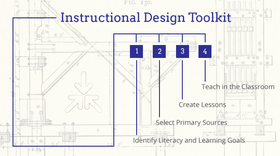Primary Source Exemplar: Nutrition and Human Rights
Overview
After having made connections between malnutrition, and metabolism and artificial sweeteners, the Anchor Source – The Universal Declaration of Human Rights, students now focus on researching the barriers to an appropriate and equitable diet.
Learning Objectives
Students will be able to determine various barriers to achieving a proper diet by conducing web-based searches.
Students will be able to categorize nutritional barriers into personal, social and political problems, and define whether the barrier affects the person, or both the person and the ecology.
Students will be able to cite textual details to provide support for their lists of barriers and offer feedback to other students on their work.
Standards Addressed
CCSS R-1 Cite specific textual evidence to support analysis of science and technical texts.
CCSS R-2 Determine the central ideas or conclusions of a text; provide an accurate summary of the text distinct from prior knowledge or opinions.
CCSS R-7 Integrate quantitative or technical information expressed in words in a text with a version of that information expressed visually (e.g., in a flowchart, diagram, model, graph, or table).
CCSS W-7 Conduct short research projects to answer a question (including a self-generated question), drawing on several sources and generating additional related, focused questions that allow for multiple avenues of exploration.
Researching for Greater Understanding – Nutritional Barriers
1) As a way to link what students have accomplished in the unit and to connect biology content to the UHDR, ask students to share their expository paragraphs with the rest of the class, or share some examples that proved concise and accurate. It is important for students to have a good understanding of the biological processes involved in choosing any diet before moving on to defining barriers to a proper diet.
2) After having read one or more of the paragraphs, remind students of the overall question driving the unit: How does access to a specific diet (nutrition) affect the people’s basic human rights?
3) Provide students with resources and time to explore barriers to nutritional access. Brainstorm with students some reasons why humans might seek out nutritional substitutes (initial examples may be lack of access to grocery stores, food spoilage, natural disasters).
4) After having answered this question in groups, have the students conduct searches for “nutritional barriers,” or barriers that prevent an individual from accessing an equal and appropriate diet for his or her energy needs. Listed in the unit’s sources is a link to the website Webpub.gov. The link directs students to a saved search that uses the keywords “barriers to healthy eating.” Either these search results or results using other keywords can be used to find articles related to other nutritional barriers. Tell students that these barriers may be connected personal, local or global problems related to diet or ecosystems. Students should work in groups to conduct this short research assignment.
5) After having researched articles, tell the students to categorize their articles into the following: biological, social, or political issues. They should also rank the issues in matter of importance and whether or not it is feasible to address the issue. Sorting and ranking nutrition barriers encourages students to analyze barriers as immediate/global locus of control and urgent/non-urgent needs. Groups share their findings with other groups and offer feedback to one another.
Assessment
Students will have:
Read closely the UDHR and answered guiding questions regarding nutrition and human rights.
Researched and selected articles from the web that describe barriers to a proper diet.
Categorized their articles into issues that are biological, social or political and ranked them in importance and feasibility for solving.
Given feedback to other groups, evaluating whether their articles address a barrier and whether the group has correctly categorized the article.
Teachers can:
Monitor students’ understand of the connection between food as a source of energy and human rights.
Monitor the groups’ research efforts and give feedback on their article selections, particularly pointing out whether or not they elaborate a barrier to proper nutrition. Also, encourage students to examine if the problem is personal, local or global.
Collect the students’ categorizations of their articles to check for understanding - students must be clear and concise in order to allow others to read their list.
- Monitor groups’ feedback discussions to check for understanding and clarify any misunderstandings.
